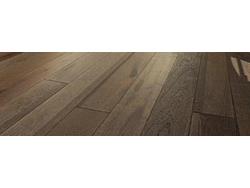UofW Team Builds Floor that Converts Pressure into Electricity
Madison, WI, December 14, 2016—Material science researchers at the University of Wisconsin-Madison have figured out how to build wood flooring material that converts downward pressure into usable electricity, reports Business Insider.
Xudong Wang, the associate professor of materials science and engineering who's leading the research, tells the publication that “…the science behind this technology is simple. The flooring is made of pressed wood pulp, which is separated into a series of small layers that have different electrical charges. Each layer is less than millimeter thick, and there are very small spaces between each one. When people walk on them, the weight causes the layers get pushed together.”
“Basically if we have two different materials that have different abilities to attract electrons, then once we put them together electrons will transfer from one to the other,” the researcher says.
Wang says the material can currently produce only a few milliwatts of power per step. “Although the flooring couldn’t gather enough electricity to power an entire building, Wang estimates that if 80,000 people in a stadium each take just one step, that would generate enough energy for more than 100 super-bright stadium-sized light bulbs. Plus, future versions of the flooring could increase the number of layers to yield a higher energy output,” the publication reports.
Wang chose to make the material out of wood pulp because it contains tiny cellulose fibers that can be chemically treated to produce an electrical charge. Next, Wang and his team will build a 50 to 100 square feet floor, which Wang expects to be complete by mid-2017.
